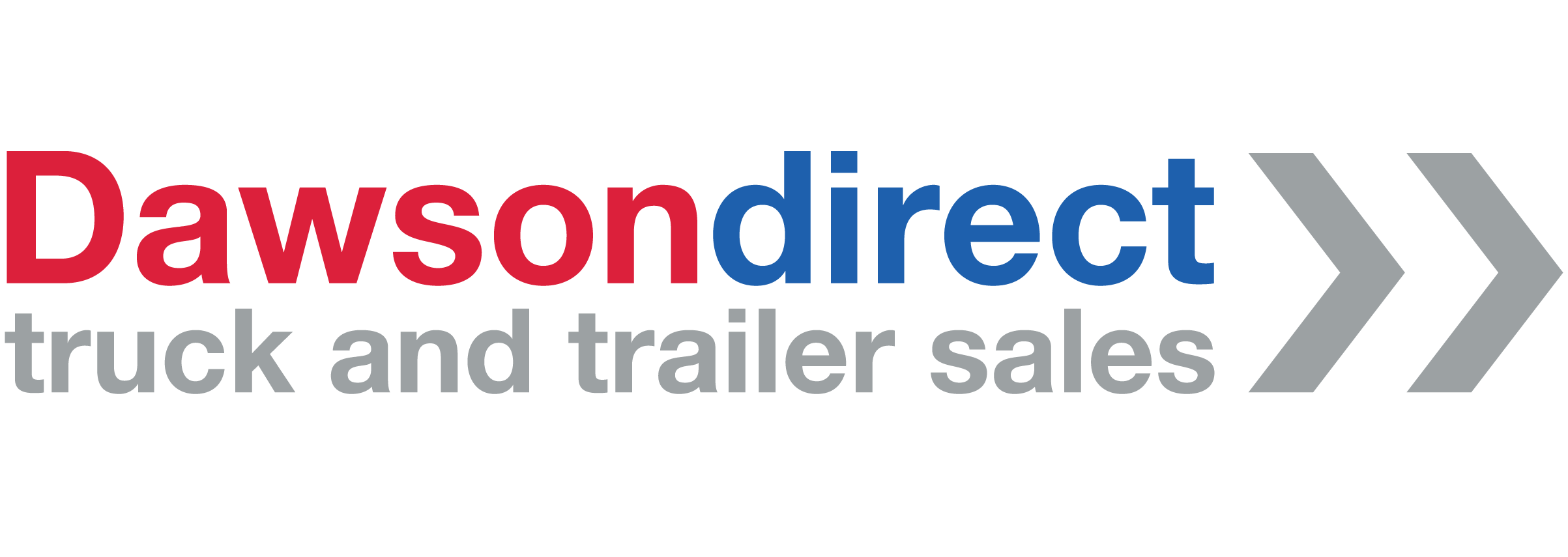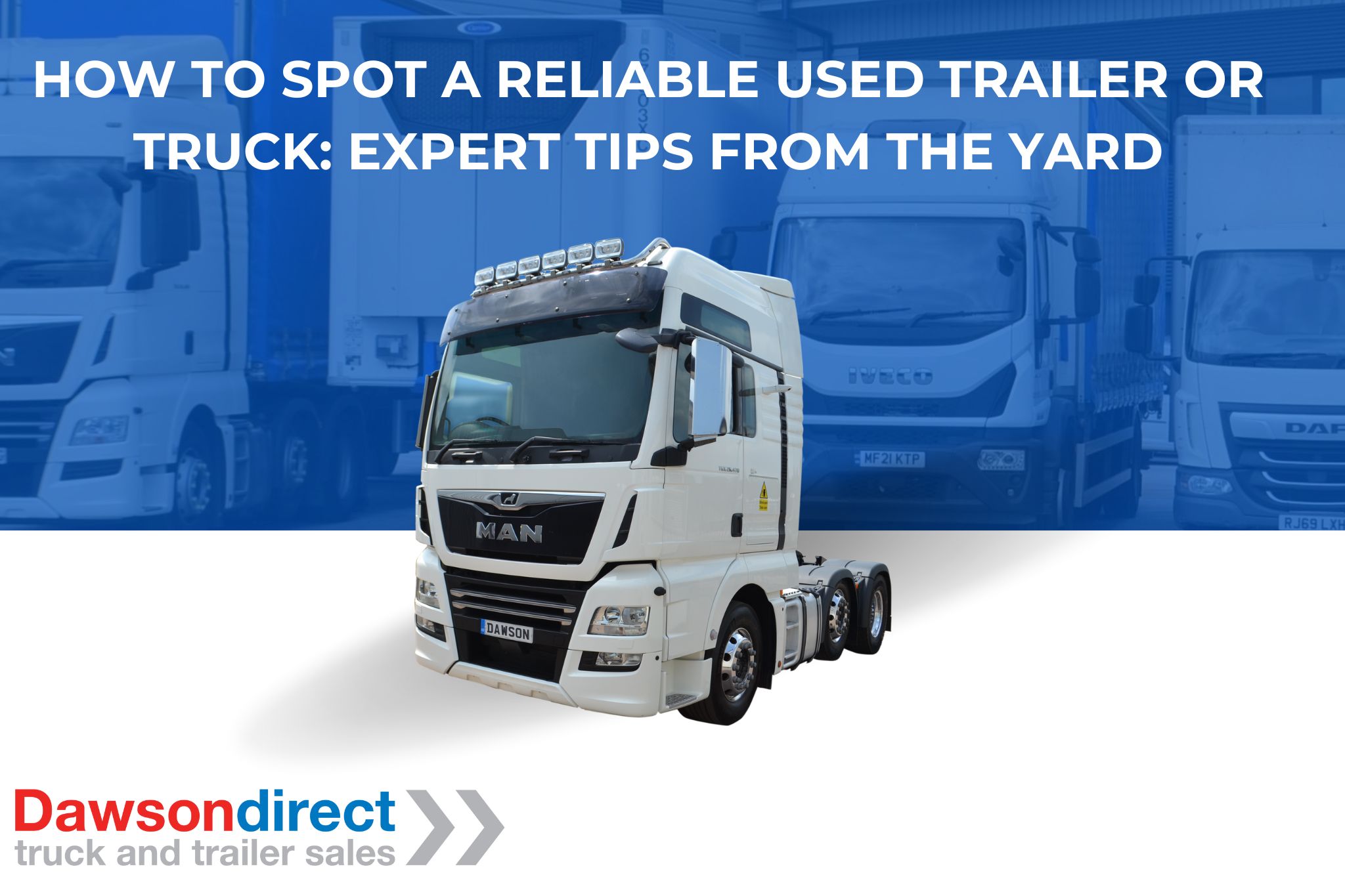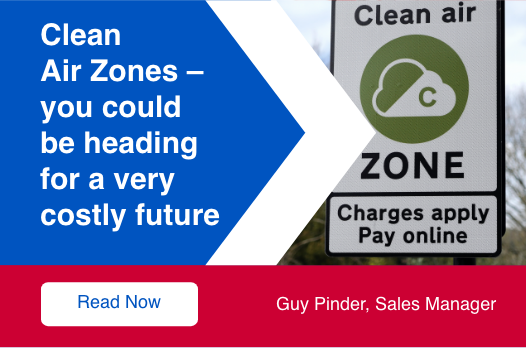How to Spot a Reliable Used Trailer or Truck: Expert Tips from the Yard
Buying a used truck or trailer can be a smart investment — if you know what to look for. Whether you’re an independent operator or managing a growing fleet, choosing the right pre-owned unit can save you thousands in upfront costs without sacrificing performance or reliability.
At DawsonDirect, we believe informed buyers make better decisions. Here’s a detailed guide to help you spot a dependable used truck or trailer before you buy.
1. Start with the Service History
A clean, well-documented maintenance record is often the first sign of a reliable unit.
Look for consistent oil changes, tire rotations, and routine inspections. Trucks or trailers serviced at regular intervals tend to have fewer surprises down the road.
-
Ask for maintenance logs or digital service reports.
-
Verify if major components (like the transmission or suspension) were replaced or rebuilt recently.
-
Be cautious if records are missing — it might mean deferred maintenance.
2. Inspect the Exterior for Signs of Wear
Walk around the vehicle slowly and look for:
-
Rust or corrosion, especially around the frame, undercarriage, and wheel wells.
-
Mismatched paint or panel repairs, which could indicate previous accidents.
-
Tire condition — uneven wear can point to alignment or suspension issues.
Remember, cosmetic flaws are normal on used equipment, but structural damage is a red flag.
3. Check the Engine and Drivetrain (for Trucks)
Pop the hood and take a close look:
-
Oil condition – Thick, dark, or milky oil may indicate engine problems.
-
Leaks – Any sign of oil, coolant, or fuel around seals or hoses needs attention.
-
Start-up behavior – The engine should start smoothly with minimal smoke.
If possible, have a mechanic perform a compression test or diagnostic scan. Spending a bit on an inspection can prevent costly surprises later.
4. Examine the Frame and Floor (for Trailers)
For trailers, frame integrity is everything.
-
Check for cracks, weld repairs, or bent crossmembers.
-
Inspect the flooring for rot, warping, or weakened areas — especially in flatbeds or dry vans that have carried heavy loads.
-
Ensure kingpin and landing gear are solid and operational.
A clean, sturdy frame means the trailer can handle more miles safely.
5. Look Underneath
Bring a flashlight. Crawl under the unit and look for:
-
Leaking seals, cracked hoses, or damaged airlines.
-
Excessive rust or corrosion.
-
Loose suspension parts or unevenly worn brake drums.
If it’s been used in a region with heavy winter salt use, corrosion can be more severe — a key factor in long-term reliability.
6. Test the Electrical and Lighting Systems
Functioning lights, wiring, and connectors are essential for both safety and compliance.
-
Test brake lights, turn signals, and marker lights.
-
Look for frayed wires or poor connections.
-
On newer units, confirm the ABS and ELD systems operate correctly.
7. Review the Title and VIN Report
Before signing anything, check the VIN history.
This report reveals:
-
Previous ownership
-
Accident or salvage history
-
Mileage verification
Avoid any unit with a branded or rebuilt title unless you know its full background.
8. Take It for a Test Drive (or Pull)
If possible, test-drive the truck or hook up the trailer to a tractor.
Pay attention to:
-
Transmission smoothness
-
Braking response
-
Ride quality and vibration
The goal is to feel how the equipment behaves under load — not just how it looks standing still.
Final Thoughts
Buying used trucks and trailers doesn’t have to be a gamble. When you know what to look for — from frame condition to service history — you can confidently choose equipment that will work hard for years to come.
At DawsonDirect, we make that process easier. Every unit we sell is inspected, verified, and ready for the road, so you can buy with confidence and keep your operation moving.
Recent News
- How to Spot a Reliable Used Trailer or Truck: Expert Tips from the Yard
- Navigating the Used Commercial Vehicle Market: A Strategic Guide for UK Operators
- Why the Demand for Used Trucks Is Rising in 2025
- Get to Know… Luke Thorsen
- Trends in the UK used truck market
- Get to Know… Guy Pinder
- Get to Know… Emma Denton
- Get to Know… Gareth Williams
- Choosing the right used truck for your business needs
- How important are truck drivers and good quality trucks to the UK economy?
- Driving and caring for an HGV in winter
- Top 10 fuel efficiency tips for HGVs
- Clean Air Zones – you could be heading for a very costly future
- UK Operator Licences – an essential guide
- Excellent customer service comes as standard with Dawsondirect
- Get to Know… Stuart Gray, our new General Manager
- Turbocharge your career in used truck and trailer sales!
- What to look for when buying a used truck
- Dawsondirect – your first choice for quality used trucks and trailers
- ‘Interesting’ time in the used truck and trailer market
- Used truck and trailer live auctions are back!
- Warehouse on Wheels satisfies strong demand at Summer events
- Get to Know… James Hunter, Head of Remarketing
- Perfect storm poses new challenges for stallwart in used truck sales
- Multi-million-pound investments in fleet renewal and refresh
- New Dawsongroup South West supersite opens for business
- Don’t get caught out by London’s Direct Vision Standard!




